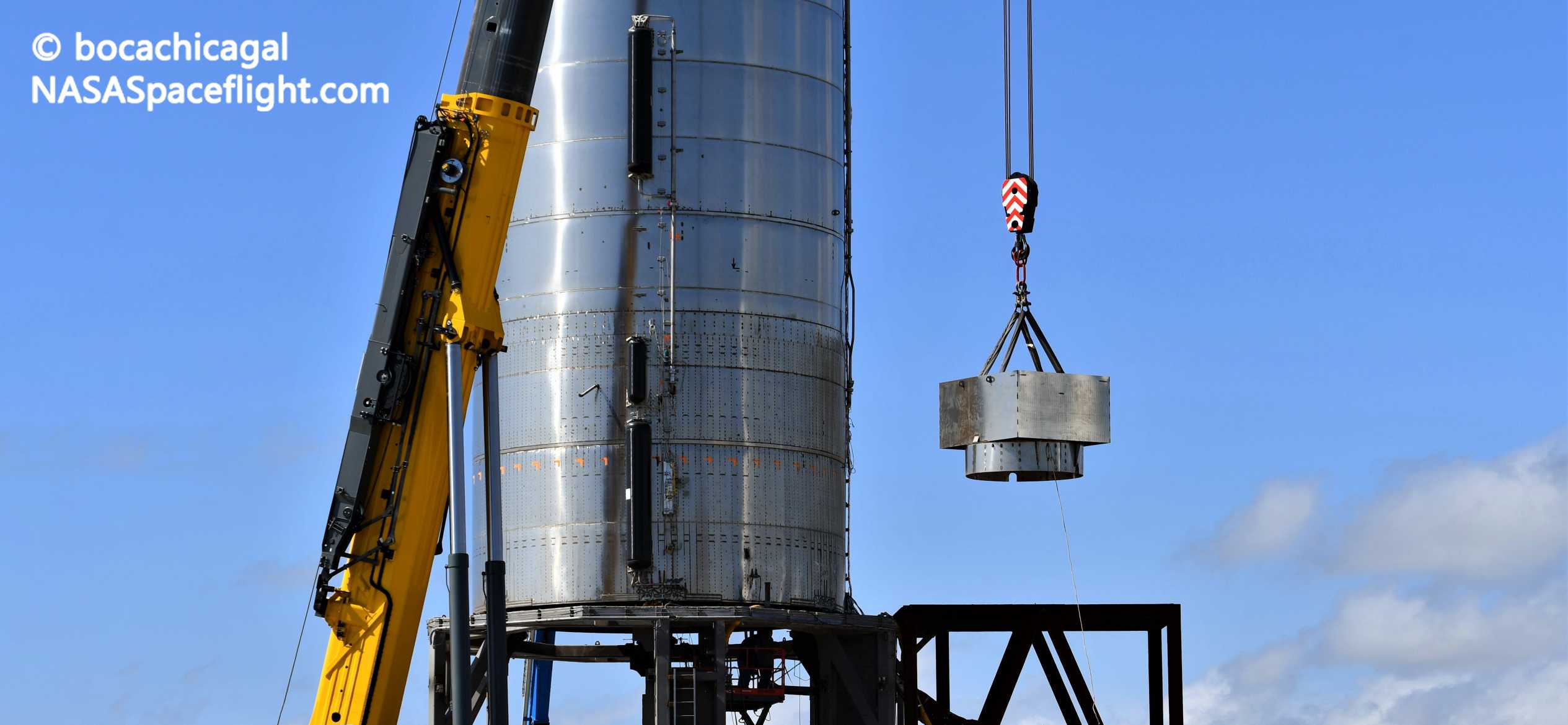

News
SpaceX Starship stacked with ballast for hop test debut
SpaceX has installed a custom-built ballast atop its fourth full-scale Starship prototype, a sign that the company is rapidly approaching the ship’s first Starhopper-style hop test.
Although CEO Elon Musk officially “redirected” SpaceX’s resources away from Starship’s first flight and towards Crew Dragon’s NASA astronaut launch debut, the company continues to work around the clock to ready Starship SN4 for the program’s biggest test yet. Designed with the goal of creating a fully-reusable, ultra-capable launch vehicle that is unprecedentedly affordable, SpaceX’s Starship spacecraft and Super Heavy booster have made impressive progress over the last 12 or so months.
In July and August 2019, Starhopper – a low-fidelity testbed and proof of concept – successfully performed two untethered hop tests, ultimately flying more than 150m (~500 ft) above ground before safely touching down. Three months later, the first full-scale Starship prototype was destroyed almost immediately after its first pressure test began, a failure that lead SpaceX to expedite factory upgrades. Just six months later, SpaceX has completed multiple successful tests, including pressure tests that pushed beyond the pressures needed for safe human spaceflight, several full wet dress rehearsals (WDRs) with live propellant, and three Raptor engine static fires. In fewer words, Starship is ready for its next big test: flight.
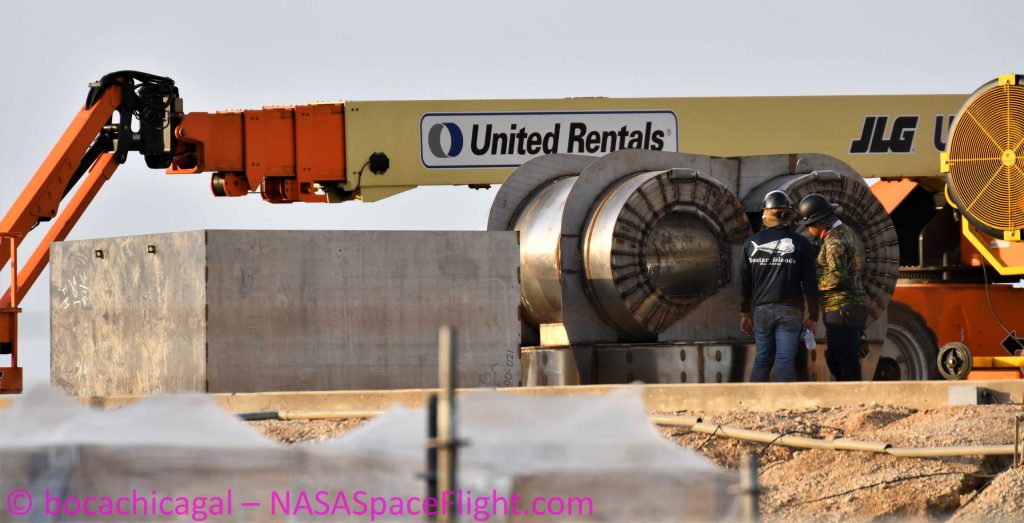
However, Starship SN4 currently has just one Raptor engine installed and will remain in that configuration for its inaugural hop, expected to reach a maximum altitude identical to Starhopper (150m/500ft). The odd configuration means that the rocket will be propelled by asymmetric thrust, as Starship’s ‘thrust puck’ engine section is designed to hold three Raptor engines in a triangular formation. Raptor is capable of producing up to 200 metric tons (~440,000 lbf) of thrust with an unclear level of throttle control (likely mediocre according to comments made by Elon Musk).
Impressively, although it might seem reasonable to assume that Starship SN4 is about as heavy as the ~120 ton Starhopper, the clear and present need to install substantial ballast suggests otherwise. Combined with comments made during SN4’s April 2020 transport from factory to launch site, it appears that even SpaceX’s early Starship engine sections weigh just 50-60 metric tons (110,000-125,000 lb) empty. That weight doesn’t account for the flaps, heat shield, nose section, or many other heavy components that orbital Starships will eventually need but is still impressive.
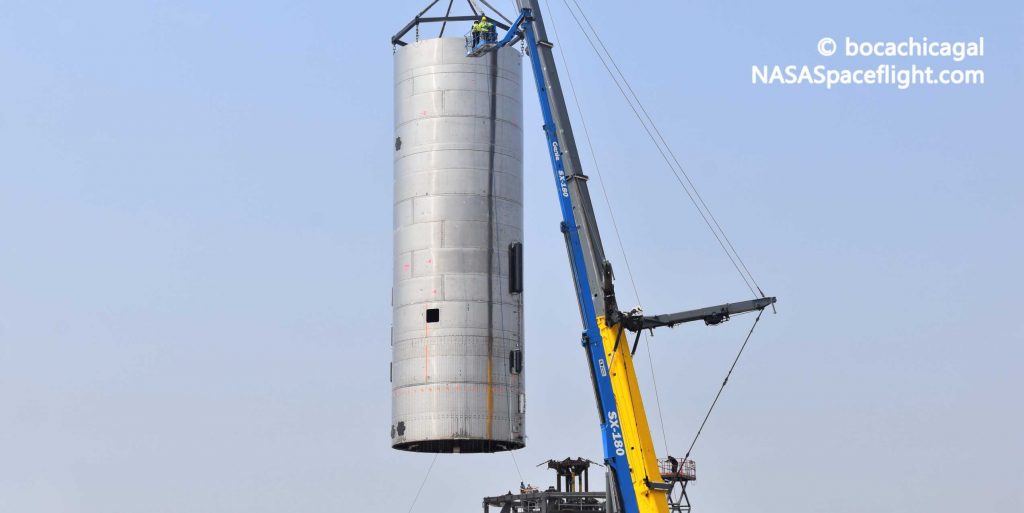
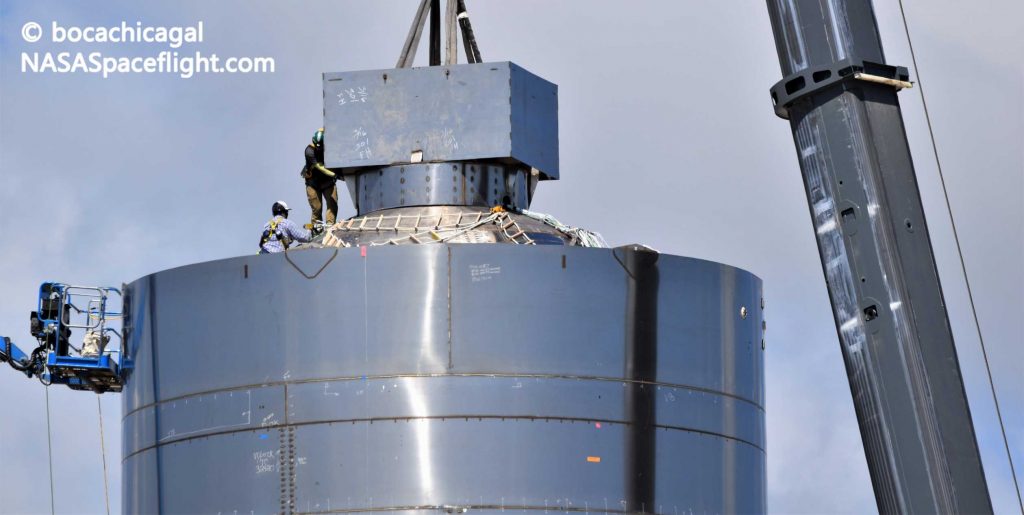
That impressive weight reduction, Raptor’s inability to safely throttle low, and the FAA’s lack of interest in dozens (up to hundreds) of tons of explosive propellant flying above or around populated areas poses its own challenges for the first full-scale Starship flight. The addition of ballast helpfully solves (or at least alleviates) several of those issues. Notably, ballast can prevent SpaceX from having to fuel Starship SN4 with dozens of extra tons of explosive propellant to counteract the high thrust of its single engine and permit a safe launch and landing.
At the same time, if Starship SN4’s wet weight is reduced by carrying less propellant during its first flight, that actually exacerbates the problem of Raptor’s small throttle range, as a lighter ship would be much harder to manage as the engine rapidly burns propellant and thus loses mass. With ballast, Raptor won’t have to throttle as low as it would otherwise have to to ensure a gentle rate of deceleration. Built out of sheet steel and two spare rolls of the same steel used to form Starship rings, Starship SN4’s new ballast likely increases its dry mass by some 50% or more (25+ metric tons).
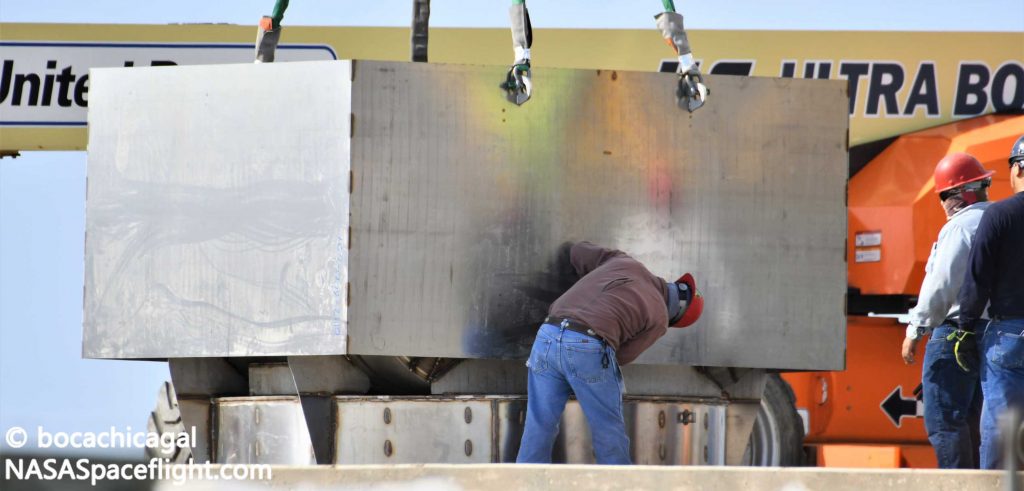
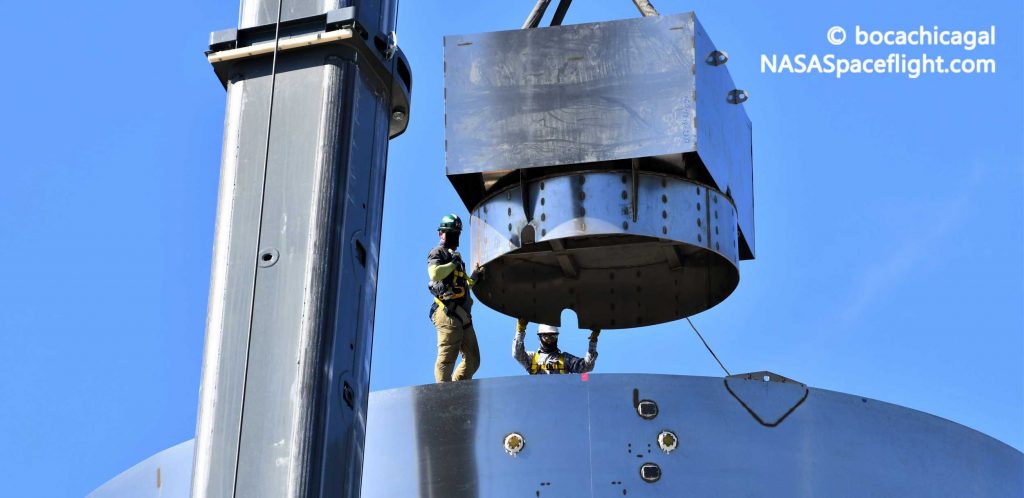
Pending Crew Dragon’s inaugural astronaut launch, now scheduled no earlier than 3:22 pm EDT (19:22 UTC), May 30th after weather delayed the first May 27th launch attempt, Starship SN4 has no testing periods on the calendar at the moment. Speaking around May 23rd, Musk stated that the ship was likely at least a “few weeks” away from its flight debut, suggesting that the ship will perform another static fire test to prepare for its first hop as early as next week. Stay tuned for updates as SpaceX’s works towards two very exciting Crew Dragon and Starship milestones.
Check out Teslarati’s Marketplace! We offer Tesla accessories, including for the Tesla Cybertruck and Tesla Model 3.
Elon Musk
Tesla investors will be shocked by Jim Cramer’s latest assessment
Jim Cramer is now speaking positively about Tesla, especially in terms of its Robotaxi performance and its perception as a company.

Tesla investors will be shocked by analyst Jim Cramer’s latest assessment of the company.
When it comes to Tesla analysts, many of them are consistent. The bulls usually stay the bulls, and the bears usually stay the bears. The notable analysts on each side are Dan Ives and Adam Jonas for the bulls, and Gordon Johnson for the bears.
Jim Cramer is one analyst who does not necessarily fit this mold. Cramer, who hosts CNBC’s Mad Money, has switched his opinion on Tesla stock (NASDAQ: TSLA) many times.
He has been bullish, like he was when he said the stock was a “sleeping giant” two years ago, and he has been bearish, like he was when he said there was “nothing magnificent” about the company just a few months ago.
Now, he is back to being a bull.
Cramer’s comments were related to two key points: how NVIDIA CEO Jensen Huang describes Tesla after working closely with the Company through their transactions, and how it is not a car company, as well as the recent launch of the Robotaxi fleet.
Jensen Huang’s Tesla Narrative
Cramer says that the narrative on quarterly and annual deliveries is overblown, and those who continue to worry about Tesla’s performance on that metric are misled.
“It’s not a car company,” he said.
He went on to say that people like Huang speak highly of Tesla, and that should be enough to deter any true skepticism:
“I believe what Musk says cause Musk is working with Jensen and Jensen’s telling me what’s happening on the other side is pretty amazing.”
Tesla self-driving development gets huge compliment from NVIDIA CEO
Robotaxi Launch
Many media outlets are being extremely negative regarding the early rollout of Tesla’s Robotaxi platform in Austin, Texas.
There have been a handful of small issues, but nothing significant. Cramer says that humans make mistakes in vehicles too, yet, when Tesla’s test phase of the Robotaxi does it, it’s front page news and needs to be magnified.
He said:
“Look, I mean, drivers make mistakes all the time. Why should we hold Tesla to a standard where there can be no mistakes?”
It’s refreshing to hear Cramer speak logically about the Robotaxi fleet, as Tesla has taken every measure to ensure there are no mishaps. There are safety monitors in the passenger seat, and the area of travel is limited, confined to a small number of people.
Tesla is still improving and hopes to remove teleoperators and safety monitors slowly, as CEO Elon Musk said more freedom could be granted within one or two months.
News
Tesla launches ultra-fast V4 Superchargers in China for the first time
Tesla has V4 Superchargers rolling out in China for the first time.

Tesla already has nearly 12,000 Supercharger piles across mainland China. However, the company just initiated the rollout of the ultra-fast V4 Superchargers in China for the first time, bringing its quick-charging piles to the country for the first time since their launch last year.
The first batch of V4 Superchargers is now officially up and running in China, the company announced in a post on Chinese social media outlet Weibo today.
The company said in the post:
“The first batch of Tesla V4 Superchargers are online. Covering more service areas, high-speed charging is more convenient, and six-layer powerful protection such as rain and waterproof makes charging very safe. Simultaneously open to non-Tesla vehicles, and other brands of vehicles can also be charged. There are more than 70,000 Tesla Superchargers worldwide. The charging network layout covers 100% of the provincial capitals and municipalities in mainland China. More V4 Superchargers will be put into use across the country. Optimize the charging experience and improve energy replenishment efficiency. Tesla will accompany you to the mountains, rivers, lakes, and seas with pure electricity!”
The first V4 Superchargers Tesla installed in China are available in four cities across the country: Shanghai, Zhejiang, Gansu, and Chongqing.

Credit: Tesla China
Tesla has over 70,000 Superchargers worldwide. It is the most expansive and robust EV charging network in the world. It’s the main reason why so many companies have chosen to adopt Tesla’s charging connector in North America and Europe.
In China, some EVs can use Tesla Superchargers as well.
The V4 Supercharger is capable of charging vehicles at speeds of up to 325kW for vehicles in North America. This equates to over 1,000 miles per hour of charging.
Elon Musk
Elon Musk hints at when Tesla could reduce Safety Monitors from Robotaxi
Tesla could be reducing Safety Monitors from Robotaxi within ‘a month or two,’ CEO Elon Musk says.

Elon Musk hinted at when Tesla could begin reducing Safety Monitors from its Robotaxis. Safety Monitors are Tesla employees who sit in the front passenger seat during the driverless rides, and are there to ensure safety for occupants during the earliest rides.
Tesla launched its Robotaxi fleet in Austin last Sunday, and after eight days, videos and reviews from those who have ridden in the driverless vehicles have shown that the suite is safe, accurate, and well coordinated. However, there have been a few hiccups, but nothing that has put anyone’s safety in danger.
A vast majority — close to all of the rides — at least according to those who have ridden in the Robotaxi, have been performed without any real need for human intervention. We reported on what was the first intervention last week, as a Safety Monitor had to step in and stop the vehicle in a strange interaction with a UPS truck.
Watch the first true Tesla Robotaxi intervention by safety monitor
The Tesla and UPS delivery truck were going for the same street parking space, and the Tesla began to turn into it. The UPS driver parallel parked into the spot, which was much smaller than his truck. It seemed to be more of an instance of human error instead of the Robotaxi making the wrong move. This is something that the driverless cars will have to deal with because humans are aggressive and sometimes make moves they should not.
The Safety Monitors have not been too active in the vehicles. After all, we’ve only seen that single instance of an intervention. There was also an issue with the sun, when the Tesla braked abnormally due to the glare, but this was an instance where the car handled the scenario and proceeded normally.
With the Robotaxi fleet operating impressively, some are wondering when Tesla will begin scaling back both the Safety Monitors and Teleoperators that it is using to ensure safety with these early rides.
CEO Elon Musk answered the inquiry by stating, “As soon as we feel it is safe to do so. Probably within a month or two.”
As soon as we feel it is safe to do so.
Probably within a month or two. We continue to improve the Tesla AI with each mile driven.
— Elon Musk (@elonmusk) June 30, 2025
Musk’s response seems to confirm that there will be fewer Teleoperators and Safety Monitors in the coming months, but there will still be some within the fleet to ensure safety. Eventually, that number will get to zero.
Reaching a point where Tesla’s Robotaxi is driverless will be another significant milestone for the company and its path to fully autonomous ride-sharing.
Eventually, Tesla will roll out these capabilities to consumer-owned vehicles, offering them a path to generate revenue as their car operates autonomously and completes rides.
For now, Tesla is focusing on perfecting the area of Austin where it is currently offering driverless rides for just $4.20 to a small group of people.
-

 News5 days ago
News5 days agoTesla Robotaxi’s biggest challenge seems to be this one thing
-

 News2 weeks ago
News2 weeks agoTesla confirms massive hardware change for autonomy improvement
-

 Elon Musk2 weeks ago
Elon Musk2 weeks agoElon Musk slams Bloomberg’s shocking xAI cash burn claims
-

 News2 weeks ago
News2 weeks agoTesla China roars back with highest vehicle registrations this Q2 so far
-

 News2 weeks ago
News2 weeks agoTesla features used to flunk 16-year-old’s driver license test
-

 News2 weeks ago
News2 weeks agoTexas lawmakers urge Tesla to delay Austin robotaxi launch to September
-

 News2 weeks ago
News2 weeks agoTesla dominates Cars.com’s Made in America Index with clean sweep
-

 News2 weeks ago
News2 weeks agoTesla’s Grok integration will be more realistic with this cool feature





















